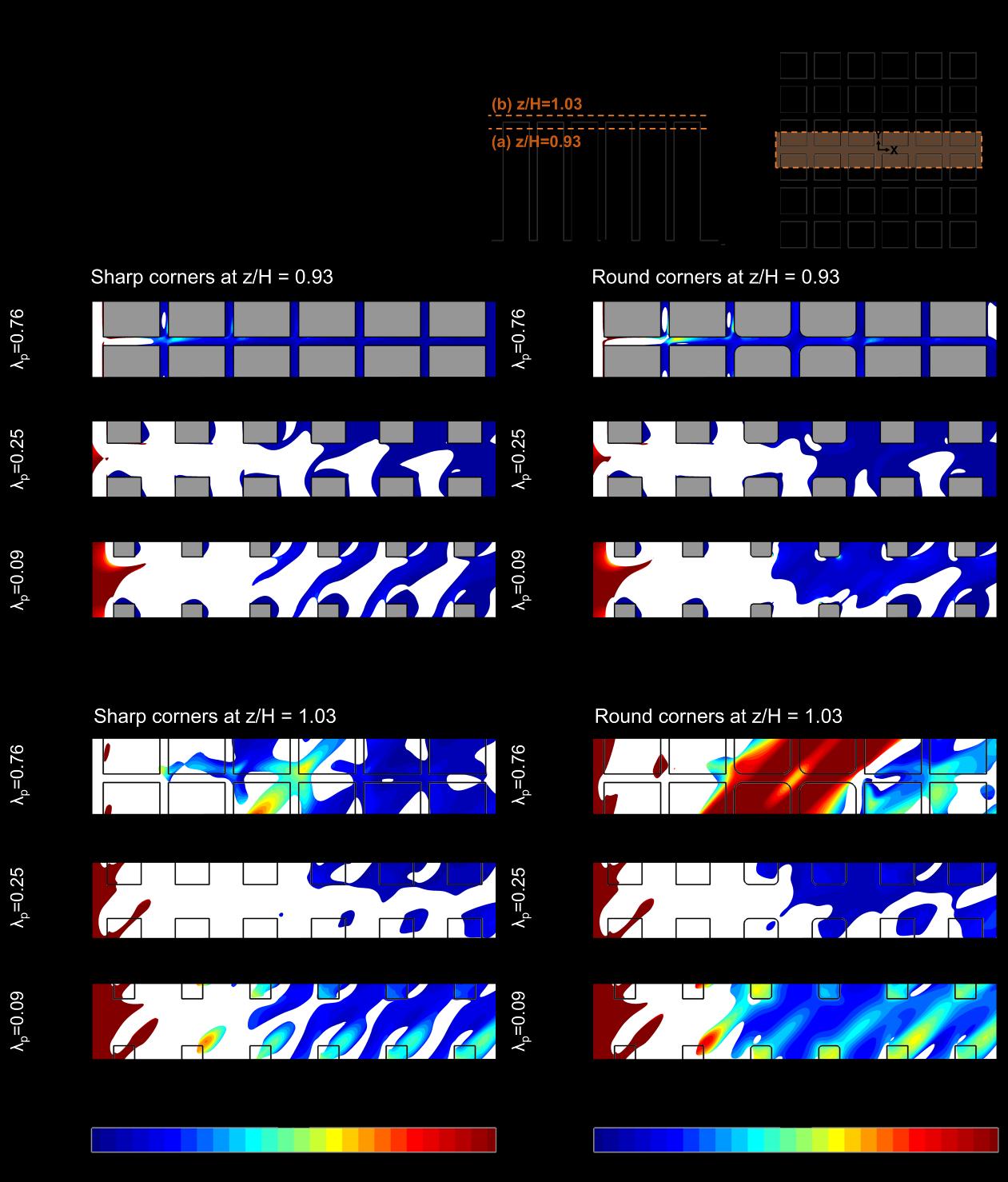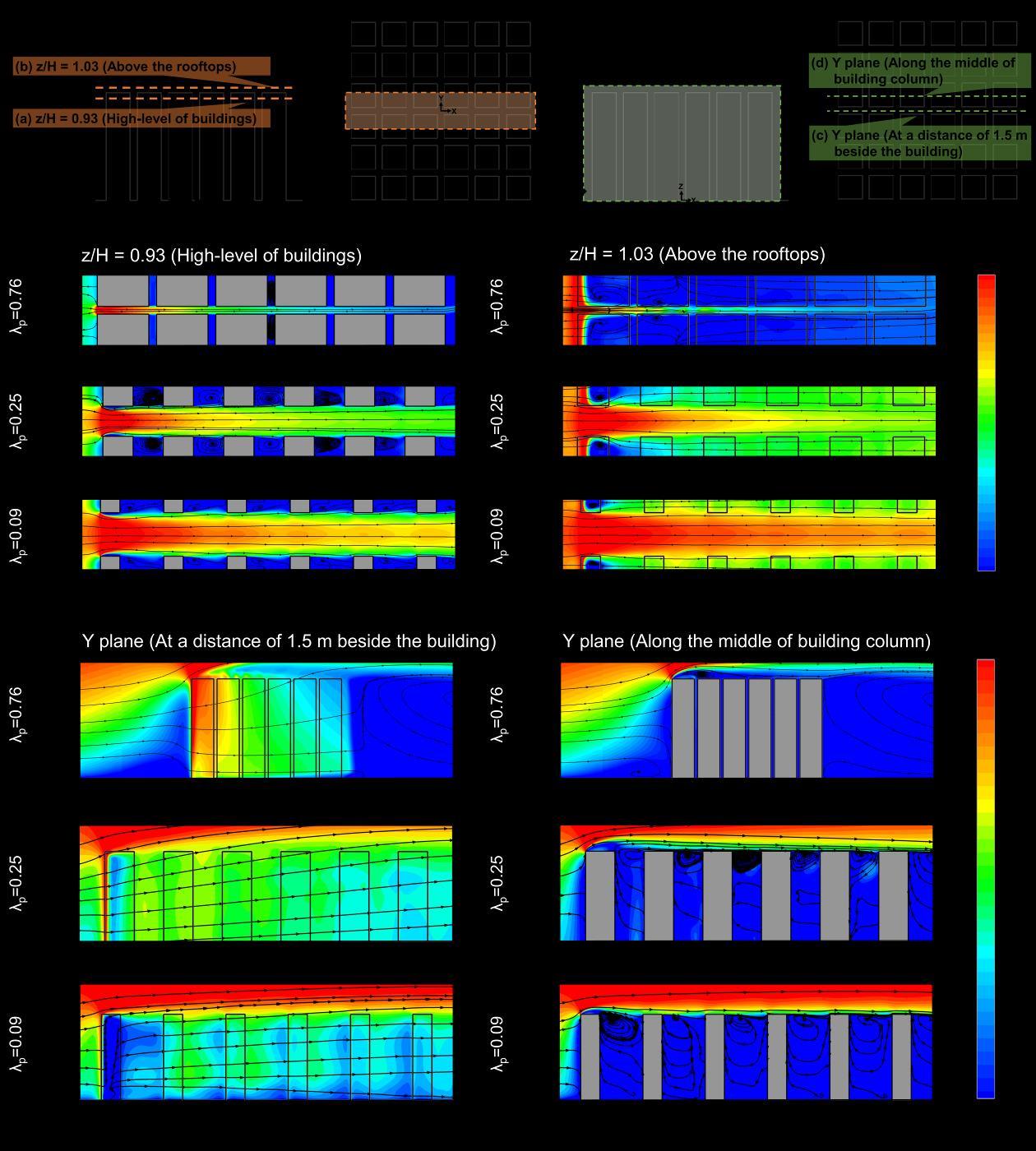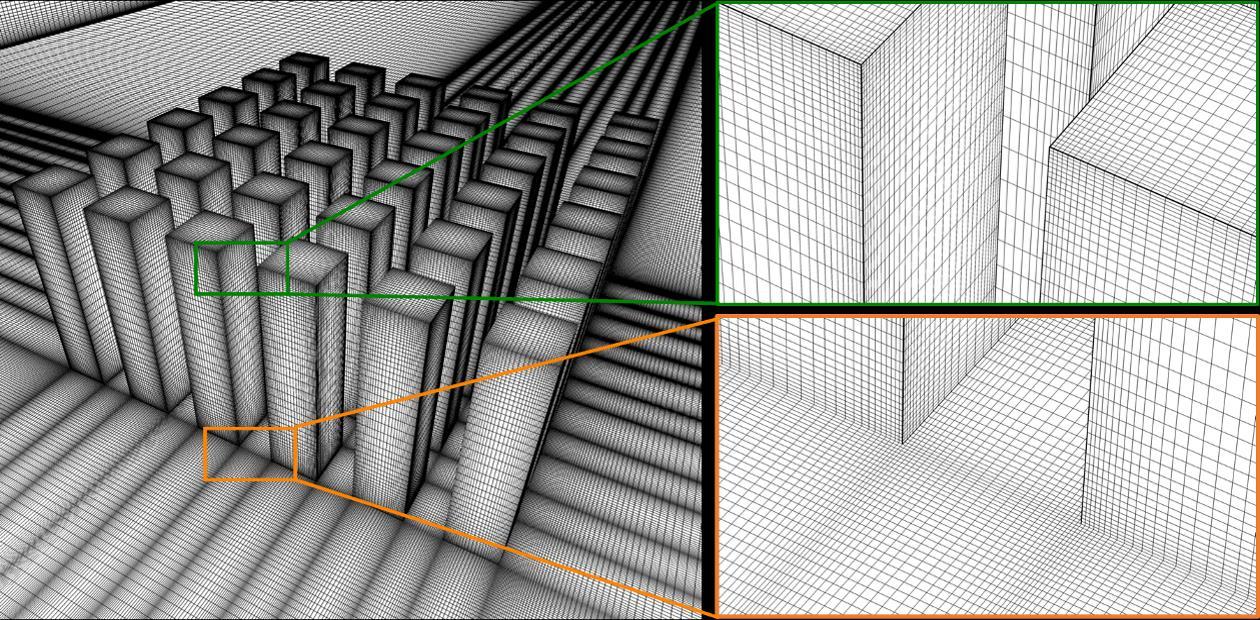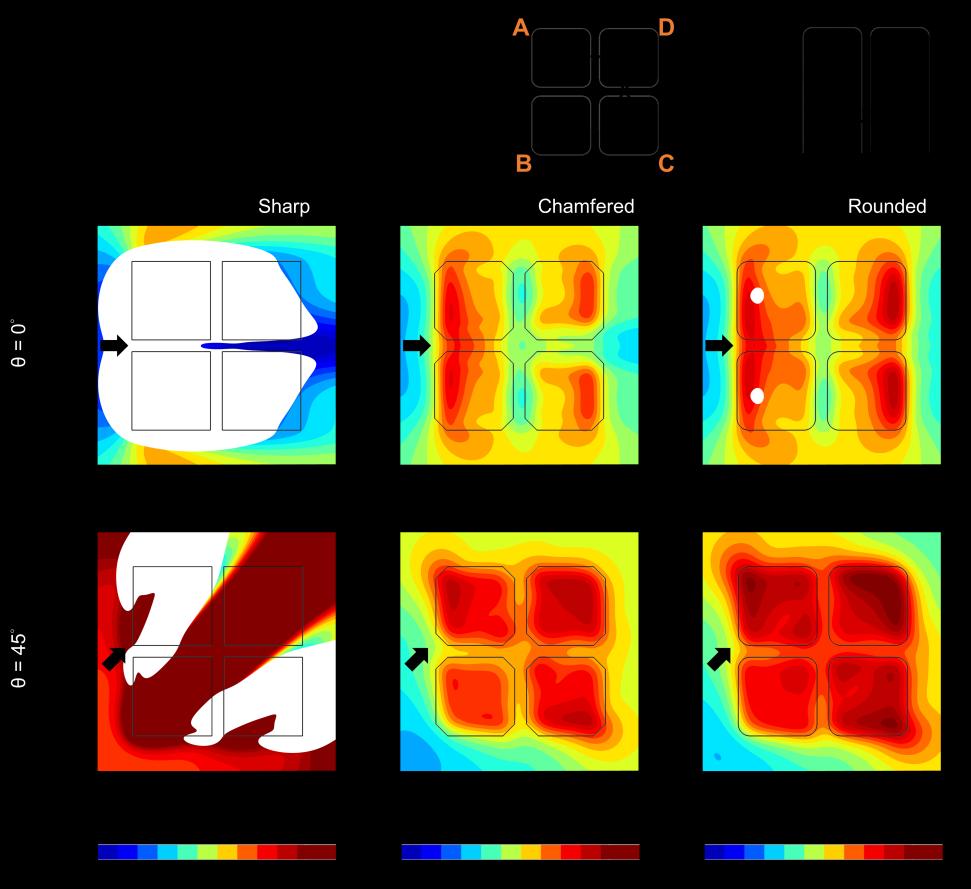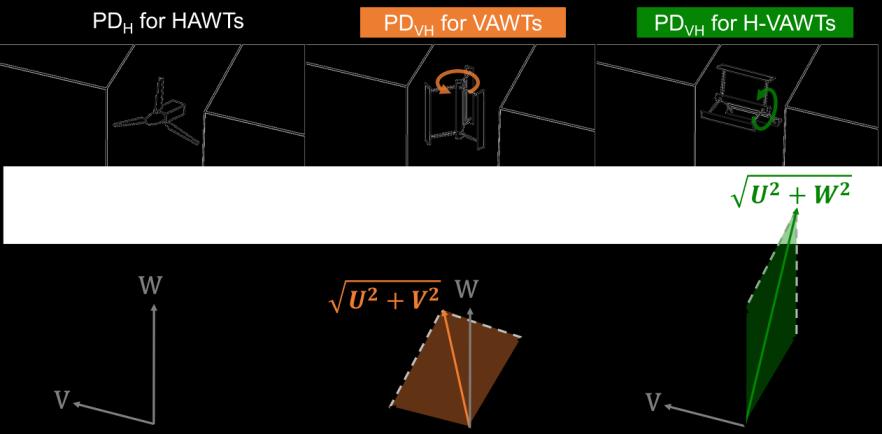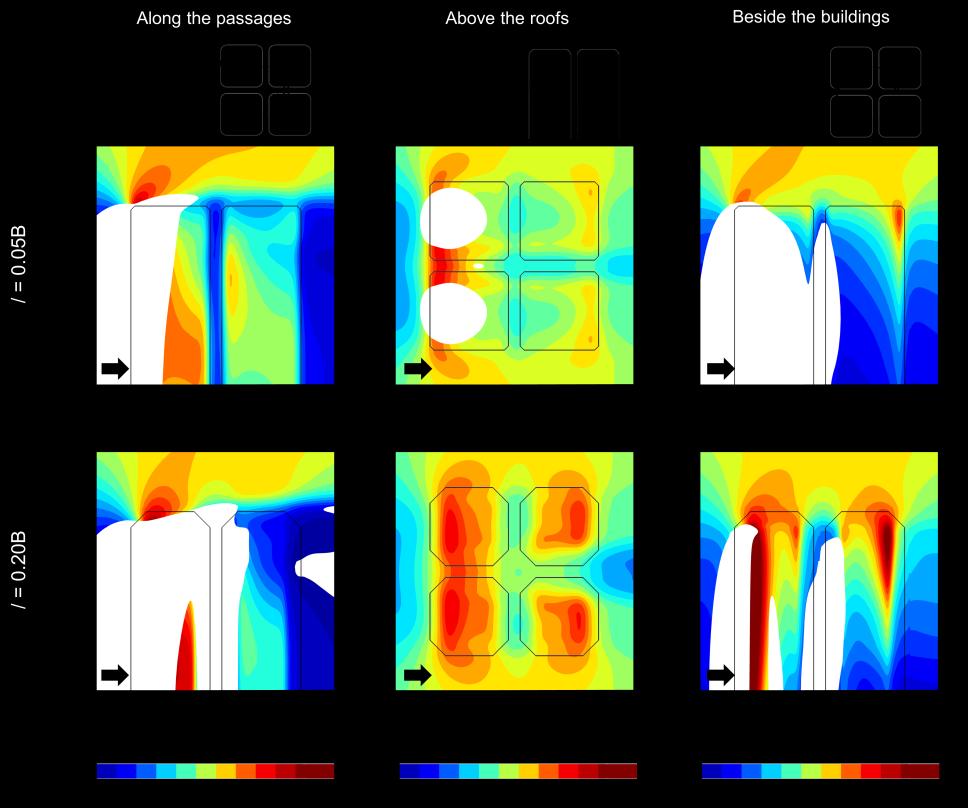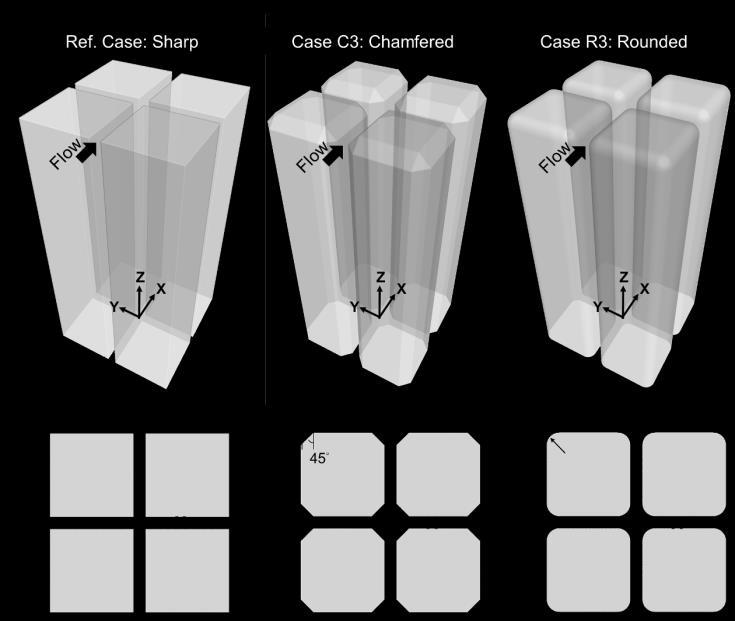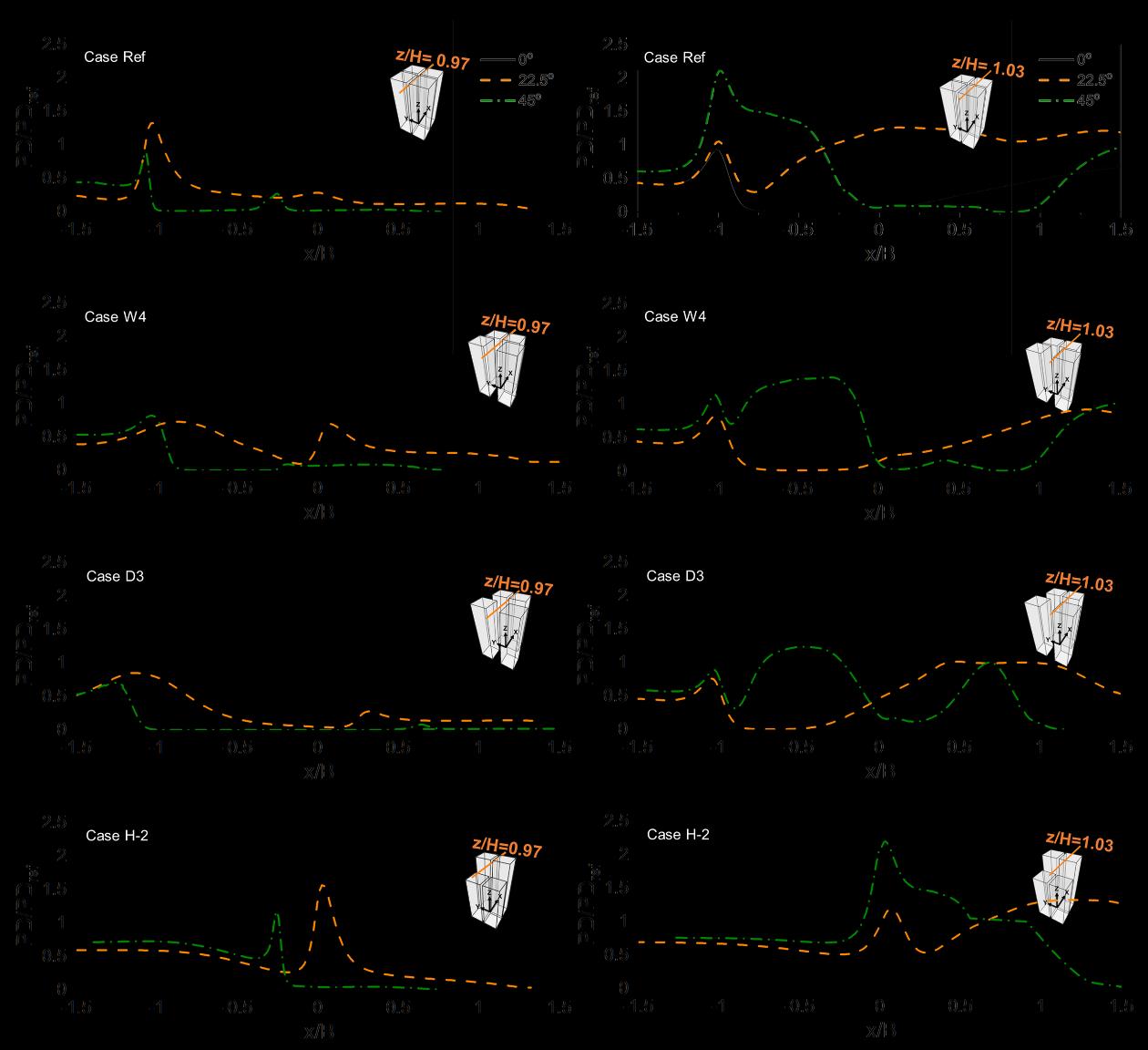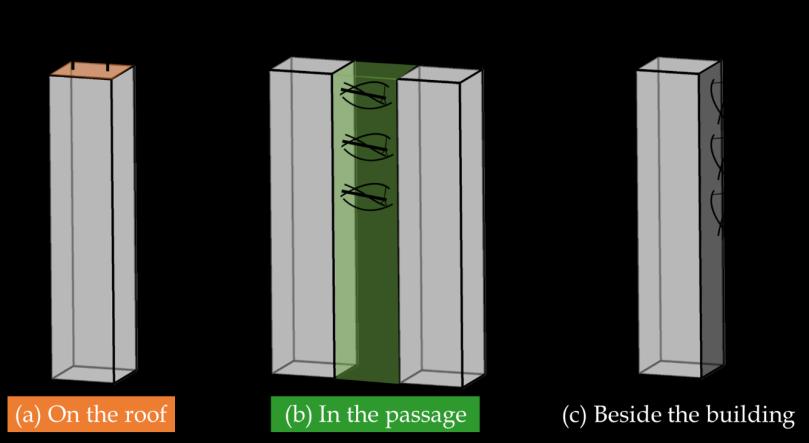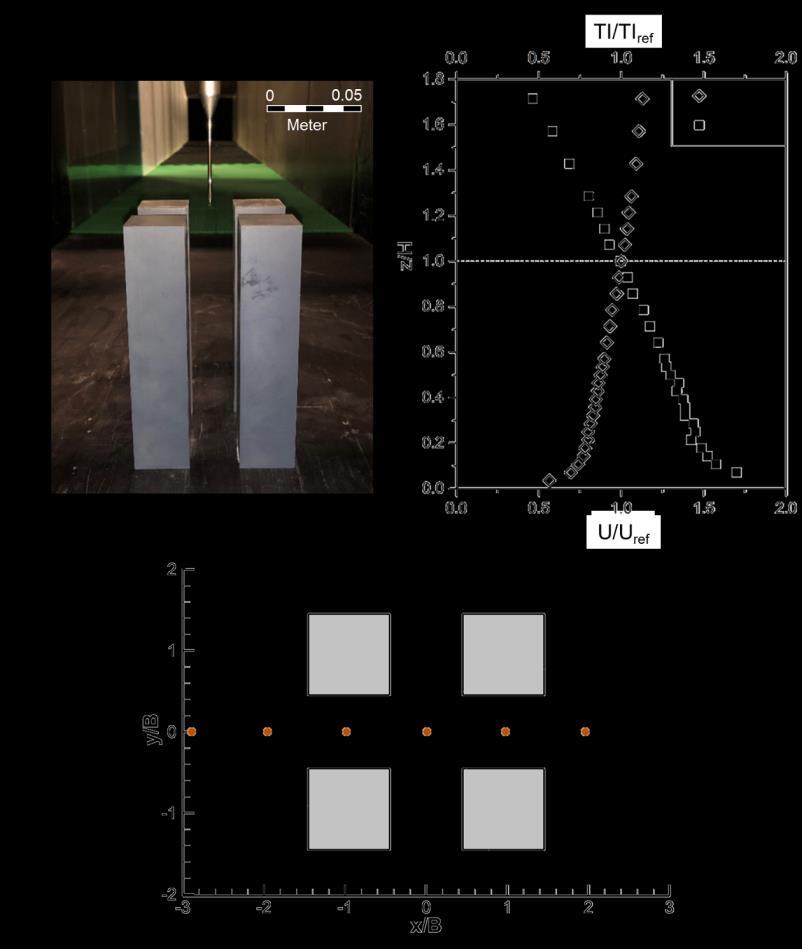Urban wind energy potential: Impacts of urban density and layout
71
the suitability of grid resolution. The CFD validation study utilizes the ANSYS/Fluent v19 to perform the 3D Reynolds-Averaged Navier-Stokes (RANS) simulations. As the most elaborate turbulence model provided by ANSYS/Fluent, the Reynolds stress model (RSM) turbulence model is selected based on a turbulence model sensitivity analysis presented in Section 4.2.1. In effect, RSM solves seven transport equations as turbulence closures to determine the individual components of the Reynolds stress tensor. The second-order discretization scheme is implemented in CFD calculations for the convection and diffusion terms of the governing equations. An iterative semi-implicit method for pressure-linked equations (SIMPLE) algorithm is used for the pressure-velocity coupling [90]. All the normalized residual errors of continuity, momentum, k, and ε equations are converged to 10−6 for attaining a steady solution.
Figure 4.3. Comparison of (a) time-averaged streamwise velocity component and (b) total turbulence intensity with wind-tunnel measured data along vertical lines at x/B= -2.9, -1.94, -0.97, 0, 0.97 and 1.94.
4.2.1
Turbulence model sensitivity analysis
The sensitivity analysis is performed to evaluate the prediction capabilities of the standard k-ε model (SKE) [91], the realizable k-ε model (RKE) [92], the renormalization group k-ε model (RNG) [93], the shear-stress transport k-ω model (SST) [94] and the RSM model [95]. Figure 4.3a presents a comparison of u/uref against the wind-tunnel measured data along the vertical


